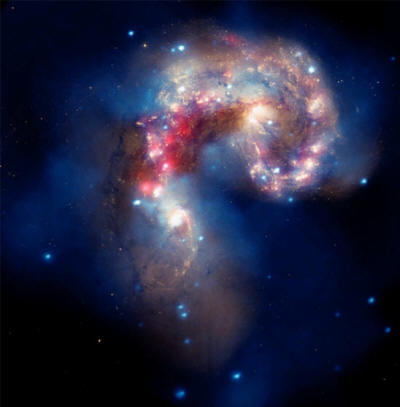|
by Mel Acheson from Thunderbolts Website
The Antennae
Galaxies. Credit: X-ray: NASA/CXC/SAO/J.DePasquale;
The interacting
filaments of
Birkeland currents
drive pinch and kink instabilities
to flare into star-forming regions. The electromagnetic forces
squeeze dusty plasma into plumes and cells. Electric fields
accelerate the charge carriers in the current to high velocities,
and the associated magnetic fields constrain them to spiral along
the fields’ directions and to emit synchrotron radiation at all
frequencies.
To account for the greater energies that electricity supplies, they must multiply the mechanical energies by imagining the gas and the clouds to be concentrated in untestable ways:
Our country-bumpkin senses, which evolved on this small, rocky planet in the provinces of our galaxy, have wandered into the electrified cosmopolis of the rest of the universe.
We must learn
the ways of plasma and give up our rock-banging habits.
|

